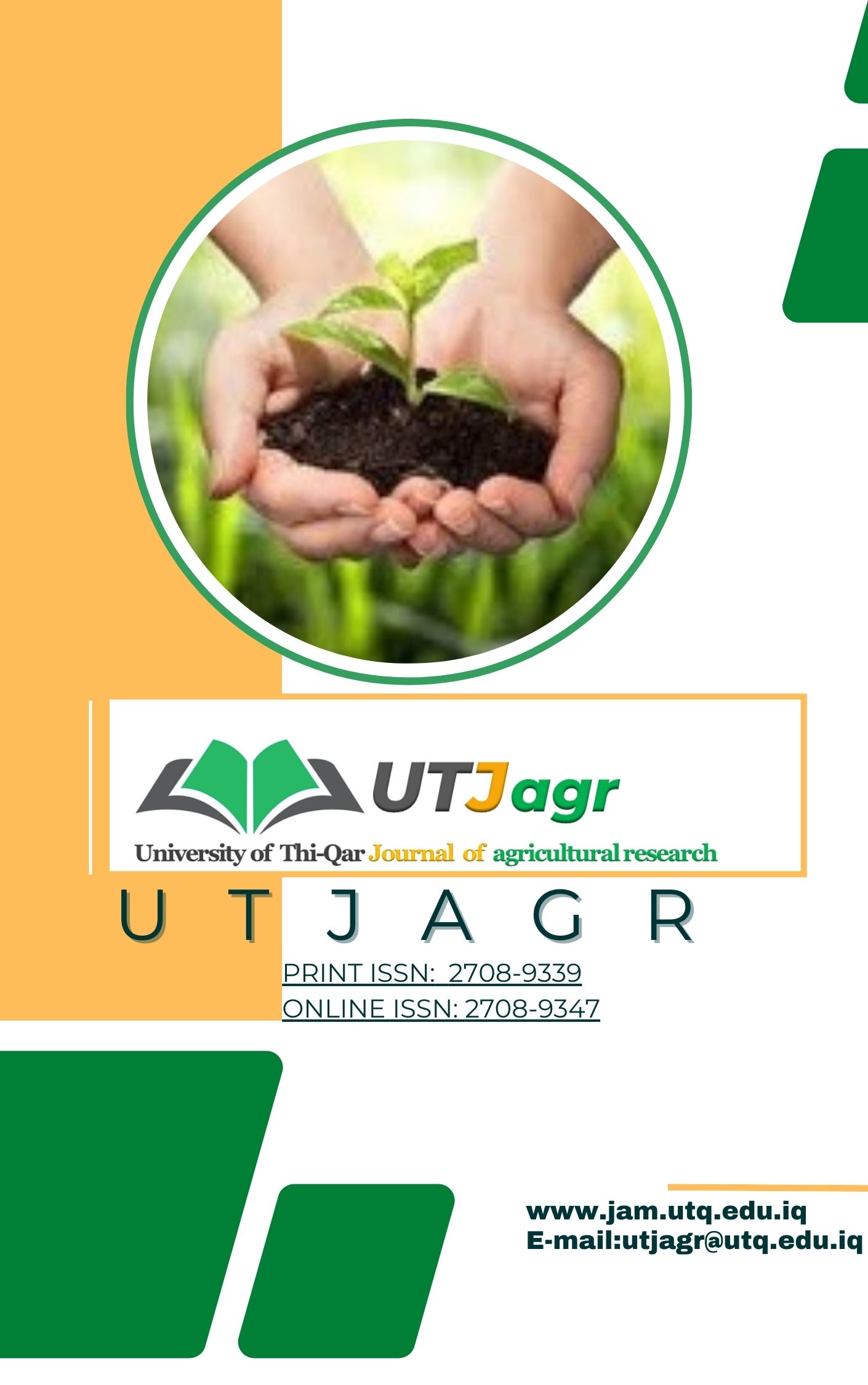Abstract
A field experiment was became performed at the College of Agriculture and Marshlands, University of Thi
Qar, 2022-2023, to study the consequences of irrigation methods (surface irrigation and basin irrigation) and compost
kind (local and imported) soil properties consisting of (bulk density, moisture content, field capacity and mean
weighted diameter) and growth indicators (plant height, number of branches per plant, leaf area, number of leaves per
plant, and dry weight of plant) as well as the yield of broad beans (number of pods per plant, number of seeds pod,
weight of 100 seeds, plant yield, and total seed yield).
The experiment was conducted according to a split-plot system in a randomized complete block design, with
main plots representing irrigation methods and subplots representing compost types, in triplicate, resulting in a total
of 18 experimental units. Least significant differences (L.S.D) at the 0.05 probability level were used to compare
treatments.
The results showed that basin irrigation outperformed surface irrigation, and local compost was superior to
imported compost in improving physical soil properties by reducing bulk density, increasing moisture content and
field capacity and mean weighted diameter. Additionally, both the growth indicators and yield were significantly
improved by increasing plant height, number of branches per plant, leaf area, number of leaves per plant, dry weight
of the vegetative part per plant, number of pods per plant, number of seeds per pod, weight of 100 seeds, individual
plant yield, and total seed yield.
Qar, 2022-2023, to study the consequences of irrigation methods (surface irrigation and basin irrigation) and compost
kind (local and imported) soil properties consisting of (bulk density, moisture content, field capacity and mean
weighted diameter) and growth indicators (plant height, number of branches per plant, leaf area, number of leaves per
plant, and dry weight of plant) as well as the yield of broad beans (number of pods per plant, number of seeds pod,
weight of 100 seeds, plant yield, and total seed yield).
The experiment was conducted according to a split-plot system in a randomized complete block design, with
main plots representing irrigation methods and subplots representing compost types, in triplicate, resulting in a total
of 18 experimental units. Least significant differences (L.S.D) at the 0.05 probability level were used to compare
treatments.
The results showed that basin irrigation outperformed surface irrigation, and local compost was superior to
imported compost in improving physical soil properties by reducing bulk density, increasing moisture content and
field capacity and mean weighted diameter. Additionally, both the growth indicators and yield were significantly
improved by increasing plant height, number of branches per plant, leaf area, number of leaves per plant, dry weight
of the vegetative part per plant, number of pods per plant, number of seeds per pod, weight of 100 seeds, individual
plant yield, and total seed yield.
Keywords
Broad Bean (Vicia faba L.)
compost
irrigation
